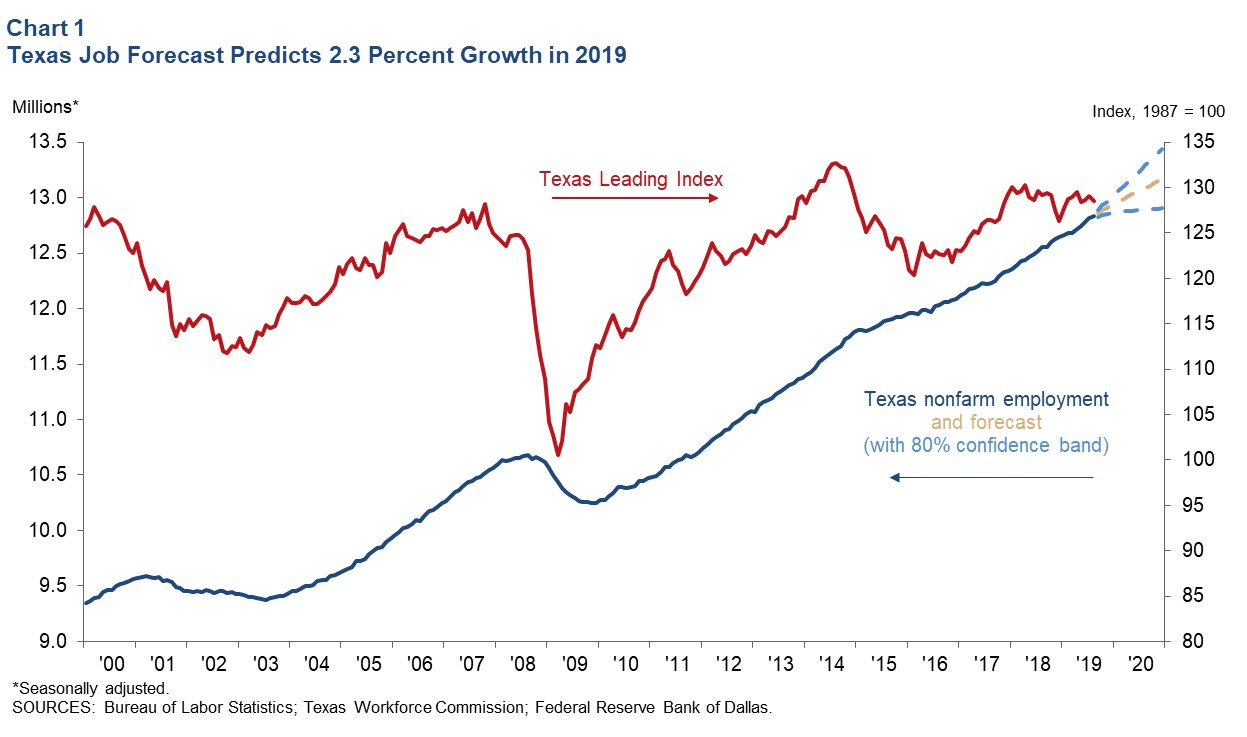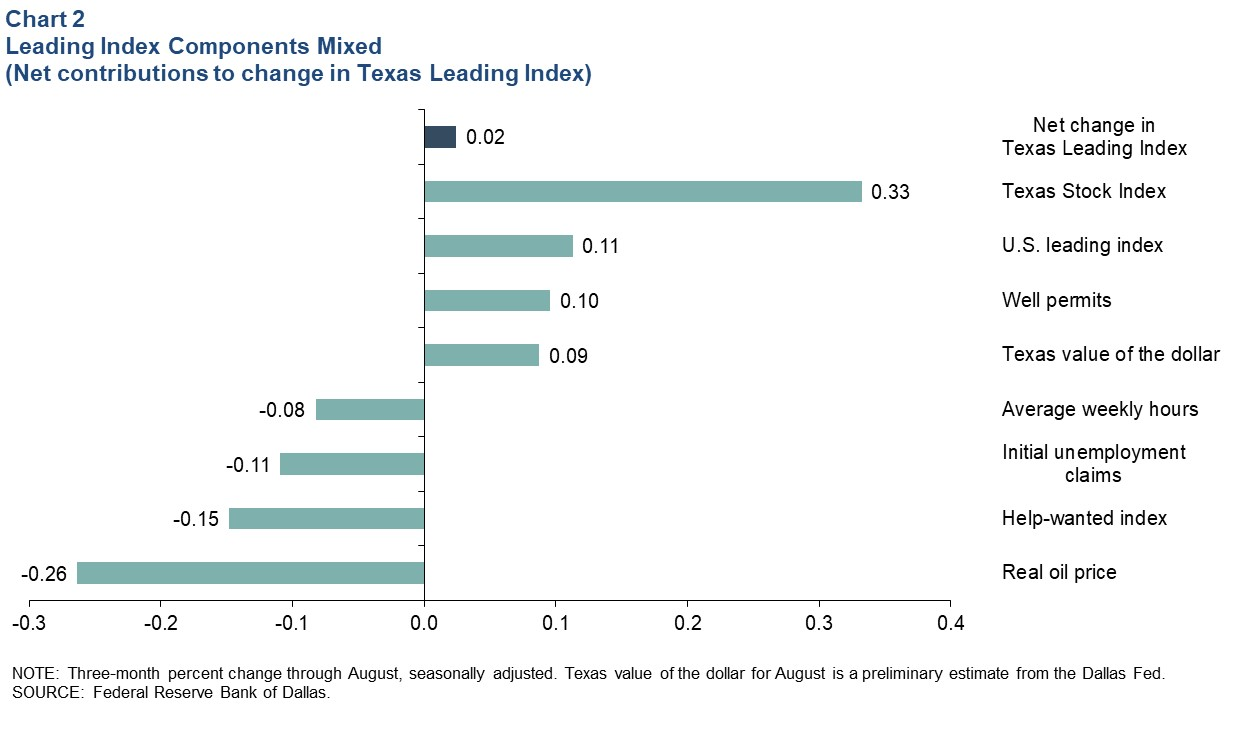Texas Employment Forecast

Incorporating August job growth of 1.8 percent, a downward benchmark revision to first quarter job growth and a slight decrease in the August leading index, the Texas Employment Forecast suggests jobs will grow 2.3 percent this year (December/December), with an 80 percent confidence band of 1.7 to 2.9 percent. Based on the forecast, 288,000 jobs will be added in the state this year, and employment in December 2019 will be 12.9 million (Chart 1).
“After two consecutive months of strong growth, Texas jobs decelerated in August,” said Keith R. Phillips, Dallas Fed assistant vice president and senior economist. “Overall outlooks from our Texas Business Outlook Surveys were slightly negative in August as business contacts reported heightened trade and political uncertainty. This is consistent with a slight decline in the Texas Leading Index and a slight reduction in the forecast for the remaining months of the year.”
Another factor affecting the change in the forecast from last month was the benchmark revision for the first quarter of the year, which resulted in a downward revision of job growth from 2.2 to 1.3 percent. With job growth so far this year not as strong as previously estimated, this lowered the forecast for the year.
The Dallas Fed’s Texas Leading Index was flat over the three months ending in August (Chart 2). The rise in stock prices of Texas companies was the largest positive contribution, while increases in the U.S leading index and declines in the Texas value of the dollar also helped buoy the index. Energy indicators were mixed, with permits to drill new wells up modestly but the decline in the real price of oil being the largest drag on the index. Labor market indicators were all mildly negative, with help-wanted advertising and average weekly hours worked in manufacturing declining while initial claims for unemployment rose.


Next release: October 18, 2019
Methodology
The Dallas Fed Texas Employment Forecast projects job growth for the calendar year and is estimated as the 12-month change in payroll employment from December to December. The forecast reported above is a point estimate with 80 percent confidence bands; in other words, the true forecast lies within the bands on Chart 1 with 80 percent probability.
The Dallas Fed Texas Employment Forecasting Model is based on a transfer function that utilizes past changes in state employment along with past changes in the Dallas Fed Texas Leading Index (TLI). Changes in the TLI have an impact on employment with a lead time of three months, and the effect dies out slowly over time. The regression coefficients on lagged changes in employment and the TLI are highly statistically significant, and the model as a whole has been accurate relative to other forecasters over the past two decades.
The forecasting model has been in use at the Dallas Fed since the early 1990s, and the employment forecast has been published in the Western Blue Chip Economic Forecast (WBCF) since 1994. Phillips and Lopez (2009) show that the model has been the most accurate in forecasting Texas job growth relative to other forecasters in the WBCF. In particular, the model had the lowest root mean squared error and has been the closest to the actual the most times (nine of the last 17 years) out of five forecasters that have consistently participated in the survey.
For more details about the model and its performance, see “An Evaluation of Real-Time Forecasting Performance Across 10 Western U.S. States,” by Keith R. Phillips and Joaquin Lopez, Journal of Economic and Social Measurement, vol. 34, no. 2–3, December 2009.
Contact Information
For more information about the Texas Employment Forecast, contact Keith Phillips at keith.r.phillips@dal.frb.org.